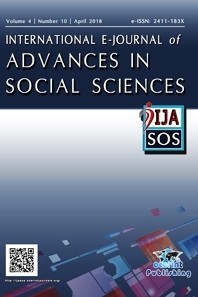
International E-Journal of Advances in Social Sciences
Yazarlar: Alena Ju. NİKİTİNA, Margarita V. EMELİANOVA, Olga A. PETROVA, Tatyana N. ROMANOVA, Anzhelika G. ABRAMOVA, Irina N. ANİSİMOVA
Konular:Sosyal Bilimler, Disiplinler Arası
DOI:10.18769/ijasos.616033
Anahtar Kelimeler:Neologism,Linguistic-cognitive level,Linguistic personality,Linguistic picture of the world,Word formation
Özet: The article is devoted to the analysis to the study of neologisms as an integral part of texts of different genres written by Catherine II. The problem is considered to be urgent as it can be useful for the study of history and historical processes in the Russian language, for to description of the linguistic-cognitive level of the linguistic personality of the empress, her picture of the world. The authors studies the reasons of the emergence of neologisms the texts of Catherine the Great, reveals the reasons that affected their usage in the texts. The authors studies the ways of neologisms formation. The concept of the term “stylistic neologism” is considered and the classification of methods of formation of the words is given. Suffixation, prefixation and stem composition methods are described as the most widely used ways for the neologisms to be formed. A productive way to form adjectives in the works of Catherine II is suffixation (suffixes -лив-, -тельн-). Suffixes -ниц-, -льниц-, -ство- are the most common productive way to form nouns. New verbs are formed by adding to the abstract or concrete noun the word-derivative suffix typical for verbs -ирова-. The desire of Catherine the Great for emotionality leads to creating of a large number of words with diminutive suffixes -ечк-, -еньк-, -оньк-, -ушк-, -юшк-. It is revealed that the individual stylistic neologisms of the empress-writer help Catherine the Great to characterize an object or phenomenon better, to emphasize the conceptual element, quality and ideological concept of the created word, necessary in a certain communicative situation.